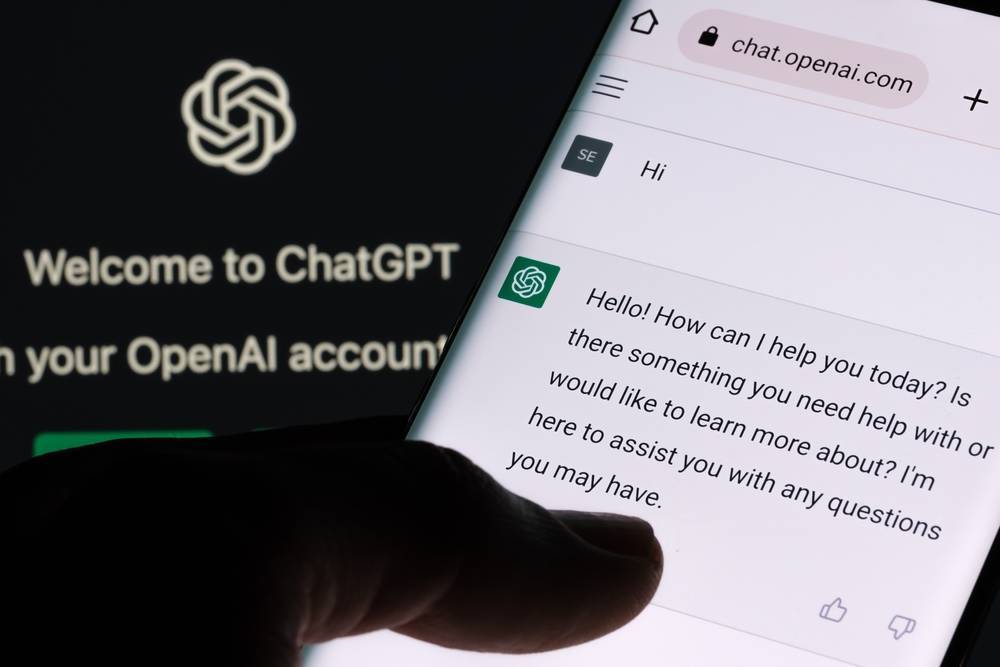ChatGPT is a chatbot launched by OpenAI in November 2022. It interacts with users in a conversational way, while the dialogue format makes it possible for ChatGPT to answer follow-up questions, admit its mistakes, challenge incorrect premises, and reject inappropriate requests.
This article will bring you all you need to know about ChatGPT and analyse how it will affect our healthcare industry in the coming future.
The healthcare professional?
You can imagine and use it as a ‘Google search’ for your health concerns but in a conversational way. It can answer your questions based on its own learning from the Internet. For example:
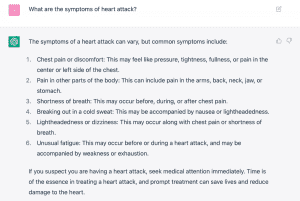
When I asked for symptoms of a heart attack, the system offered me a list of common symptoms, recognized that this is a serious medical condition and advised me to ‘seek medical attention immediately’.
The other way around, I can also ask for a potential diagnosis giving the system my symptom:

Rather than the hundreds of websites we get after a Google search, ChatGPT summarised the Internet resource for us and offered a concise and easily understandable answer.
Now let’s try something harder: I asked ChatGPT about carbamazepine – a commonly used medication for seizure treatment.
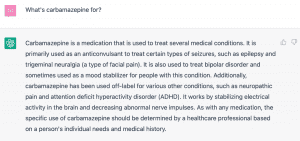
I did not specify which aspect of this medication I’d like to know. Thus, it offered me multiple aspects of this medication: the common functions, including off-label use; its mechanism of action (stabilizing electrical activity in the brain); and a warning that it should be prescribed by healthcare professionals only. Interestingly, it offered layman-term explanations for medical vocabularies, like trigeminal neuralgia: a type of facial pain.
By contrast, if I type in the same question in Google, here’s what I got:
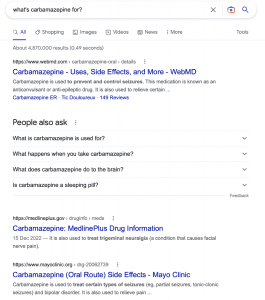
On Google, it did give me a list of websites the system thinks are most relevant, but I’d have to click on those websites and try to extract information from them. Sometimes I might end up with a 1000 words article full of professional medical terms.
To make it even harder, let’s see if the system can read an X-ray. So far ChatGPT offers text-only mode and does not support photo, audio, or video. So, I asked the system how to diagnose heart failure on an X-ray:
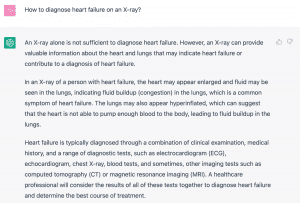
I intentionally made this a trick question, as I understand that an X-ray by itself could not diagnose heart failure. And I’m surprised that the system told me that in the first line. After that, it explained the common signs of heart failure on an X-ray image and discussed the correct way to diagnose heart failure.
As a healthcare professional, I’m confident to let you know that the content we’ve shown you in this article from ChatGPT so far is all scientifically and medically correct.
A replacement of doctors?
Now you might be wondering, does this qualify ChatGPT as a doctor now? Well, yes and no. In December 2022 (the current version of ChatGPT accessible by the public is the Jan 30 Version), a group of researchers instructed ChatGPT to ‘sit’ the United States Medical Licensing Exam (USMLE), which consists of three exams: Step 1, Step 2CK, and Step 3. The system performed at or near the passing threshold for all three exams without any specialized training or reinforcement. Additionally, according to their publication, ‘ChatGPT demonstrated a high level of concordance and insight in its explanations’. With specialised training and more system updates, it’s highly likely that ChatGPT will further improve its score.
However, it’s unlikely that ChatGPT will replace the role of doctors soon. For one, we are not sure if ChatGPT will develop sympathy, and how it will handle ethically conflicting scenarios. For another, doctors in hospitals work as a team, usually, the diagnosis and treatment plan is drafted and agreed upon by a group of doctors to avoid mistakes, whereas ChatGPT is just ONE system. But what it can do is act as an aid to doctors. Many diseases have streamlined treatment guidelines from CDC or other health authorities. ChatGPT can examine a doctor’s treatment plan, make suggestions, or even point out mistakes. Meanwhile, with more picture-based medical training, it can also help doctors analyse medical images, like X-rays or CT scans.

